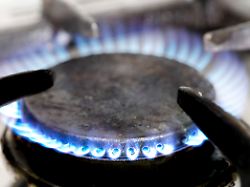First time since June 2021
European gas price falls below 30 euros
05/18/2023, 7:43 p.m
Gas prices are continuing their downward trend, which has been going on for months: The trend-setting futures contract TTF falls below 30 euros per megawatt hour. It is currently well below the level it was just before the war began in February 2022.
The price of European natural gas has fallen below EUR 30 per megawatt hour (MWh) for the first time since June 2021. The trend-setting TTF futures contract for delivery in one month fell to EUR 29.75 per MWh in the afternoon. Gas prices are thus continuing the downward trend that has lasted for months.
Because of Russia’s war against Ukraine, natural gas prices had risen drastically by the summer of last year. In August 2022, prices of more than 300 euros were paid at the peak. A high dependency on Russian gas had fueled fears of an energy crisis.
Since then, however, prices have fallen significantly. After a mild winter, the natural gas storage facilities are well stocked. In addition, sufficient liquefied natural gas (LNG) could be imported from other countries. The weakening economic development is also dampening demand. The price of gas is also currently well below the level it was just before the war began in February 2022. However, before 2021 it had consistently cost significantly less than 30 euros.
Despite an easing on the gas markets, the International Energy Agency (IEA) has warned of new risks and price fluctuations. The pressure on the gas markets eased at the beginning of 2023 due to a mild winter and political measures, the IEA announced in its gas market report for the first quarter. However, the global gas supply will remain scarce in 2023 and there is great uncertainty.
These included the possibility of a dry summer or a colder-than-usual winter, but also reduced LNG availability and a further decline in Russian pipeline gas supplies to Europe. Therefore, the gas demand must be further reduced through improved energy efficiency, the accelerated use of renewable energies and heat pumps as well as behavioral changes, according to the IEA.
